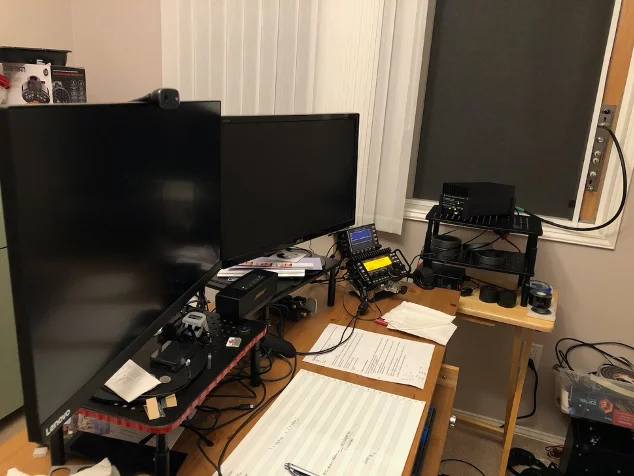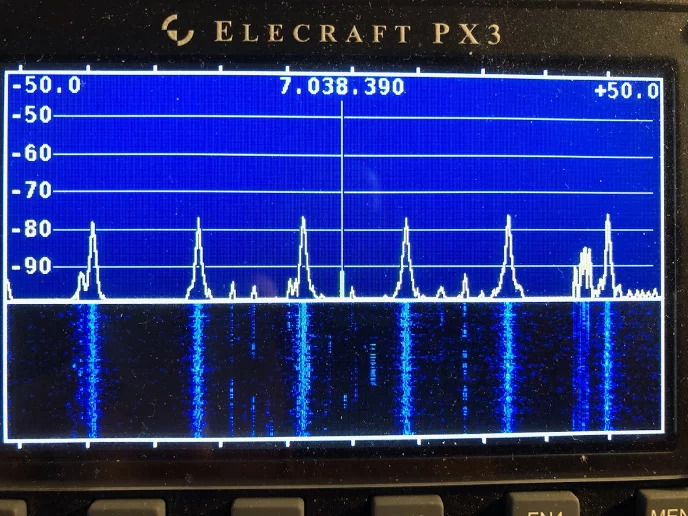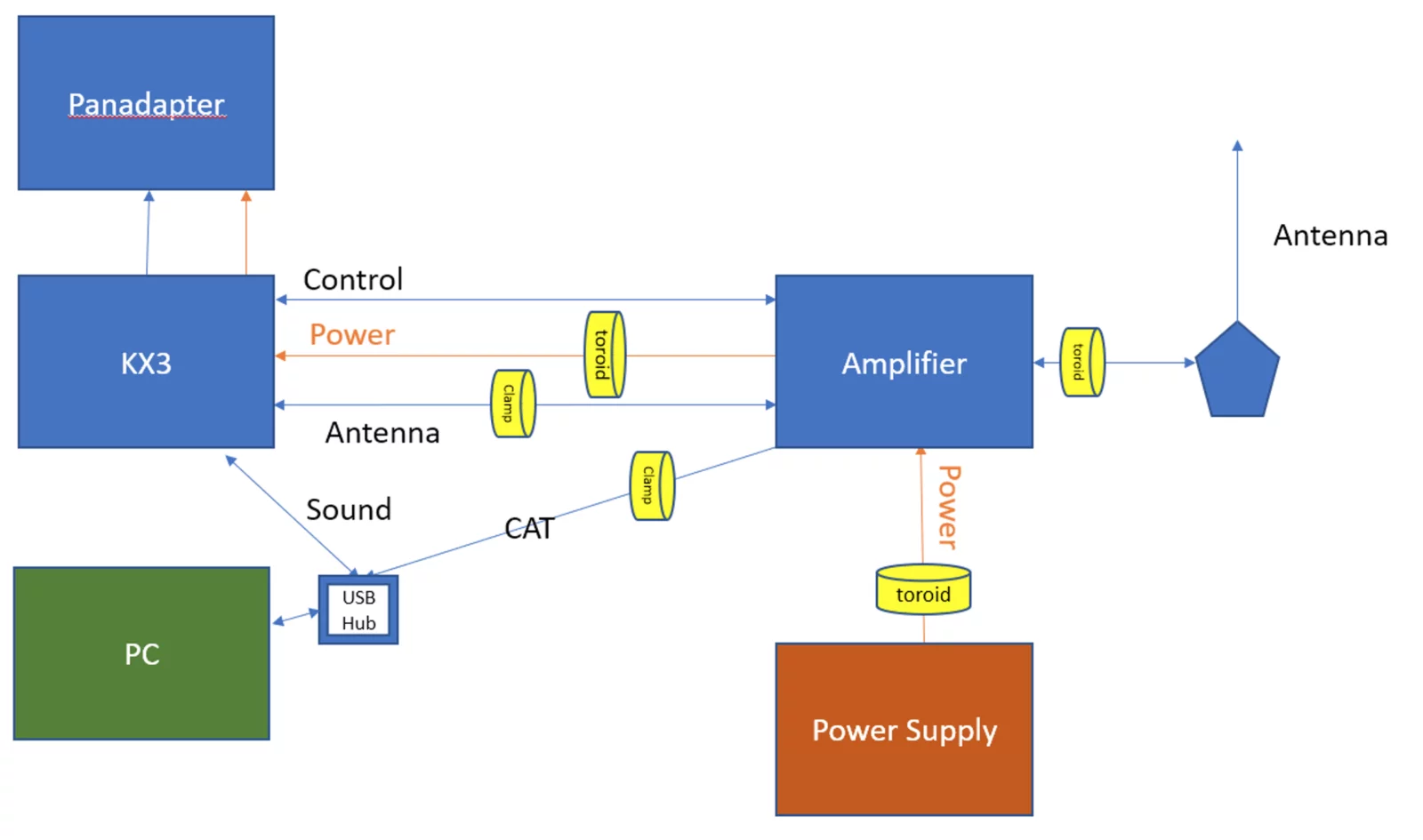My daughter graduated college and moved back home, necessitating a need for me moving my work area. After I set up my work desk and ham shack in the former dining room. Further completing the experience, I have the antenna running right out the back of the house up into a tree. I recently built a custom screen to fit in between the wood with antenna connections and the rest of the window.

Elecraft KX3 (all-mode HF radio), Panadapter, amplifier (so I can operate above 15W!), and a PowerWerx SS-30DV switching power supply. Underneath the desk is my Dell T3420 PC running Windows 10. For digital modes, sound to and from the radio goes through a (redacted) USB hub/sound dongle. I’m usually logging contacts in real-time.
I was seeing several weird radio frequency interference (RFI) symptoms when operating:
- Evenly-spaced “Birdies” on 40M. This was a rare occurrence, usually in the morning. I think it was probably caused by the switching power supply, but could have also been the furnace.
- Audible noise from my switching power supply. This only occurred with FT8 and when transmitting with lower audio.
- Windows USB device disconnections. This seemed to happen when using FT8 on 10m and 15m on “high” power, which for me is over 50W.
- Windows would open Outlook. This would occur when using CW on 10m and 15m. Each dash was causing a Windows shortcut sequence to the keyboard. This was pretty frequent and something I had rationalized away as “Don’t play on 10m and 15m.” D’Oh.
- Audible FT8 warble on my bluetooth speaker, ruining any Spotify zen. My family agrees with me that FT8 is an unpleasant warble.
- Computer headphones would buzz if I keyed CW. I hadn’t discovered this until trying to diagnose the other issues and accidentally left the headphones plugged into the computer and at a good volume. Fortunately, it occurred all the time.

So yeah, RFI.
After trying to document all the weird stuff and when, I tried some super obvious things like moving the computer further away from the radio. I could go only so far, though. Next, I swapped out the USB hub/card dongle with a Sabrent that I had successfully used on my Macbook when I started doing FT8. That seemed to help with random disconnects. The USB hub went into the recycle bin.
Since the power supply was suspect, I swapped it out with a heavy linear supply, the Astron 30. I could still hear the most reproducible problem, the CW buzz, so I focused on reducing that. I had been trying to read up on RFI and found a couple of especially helpful resources: a November 2018 presentation from the Radio Club of Redmond and a well-written, detailed tome by Jim Brown, K9YC, which included a dumbed-down section on “what mix of toroids to buy.” Spoiler: for HF bands, #31 was a good choice. Pro Audio Engineering had most of what I needed at manageable prices.
Through some trial and error, I ended up doing this:
- Coax wound several times around toroid from the KXPA100 to the outside balun.
- #31 clamp-on ferrite on 120VAC input to the power supply, wound as many times as I could fit.
- #31 clamp-on ferrite on the 13.8 VDC output from the power supply
- USB cable to the KXPA100 wound several times through a #31 clamp-on ferrite.
- #31 clamp-on ferrite between KX3 and KXPA100
- Replaced the 6” control cable between the KX3 and KXPA100 with a 3’ Cat 7 Ethernet, which let me
separate that cluster of cords it further away from the desk.
A block diagram will be helpful:

After doing all of this, most of the problems appear to be gone. The one that still occasionally crops up is the FT8 warble on the Bluetooth speaker, which may be a timing issue with when I launch Spotify and WSJTX.